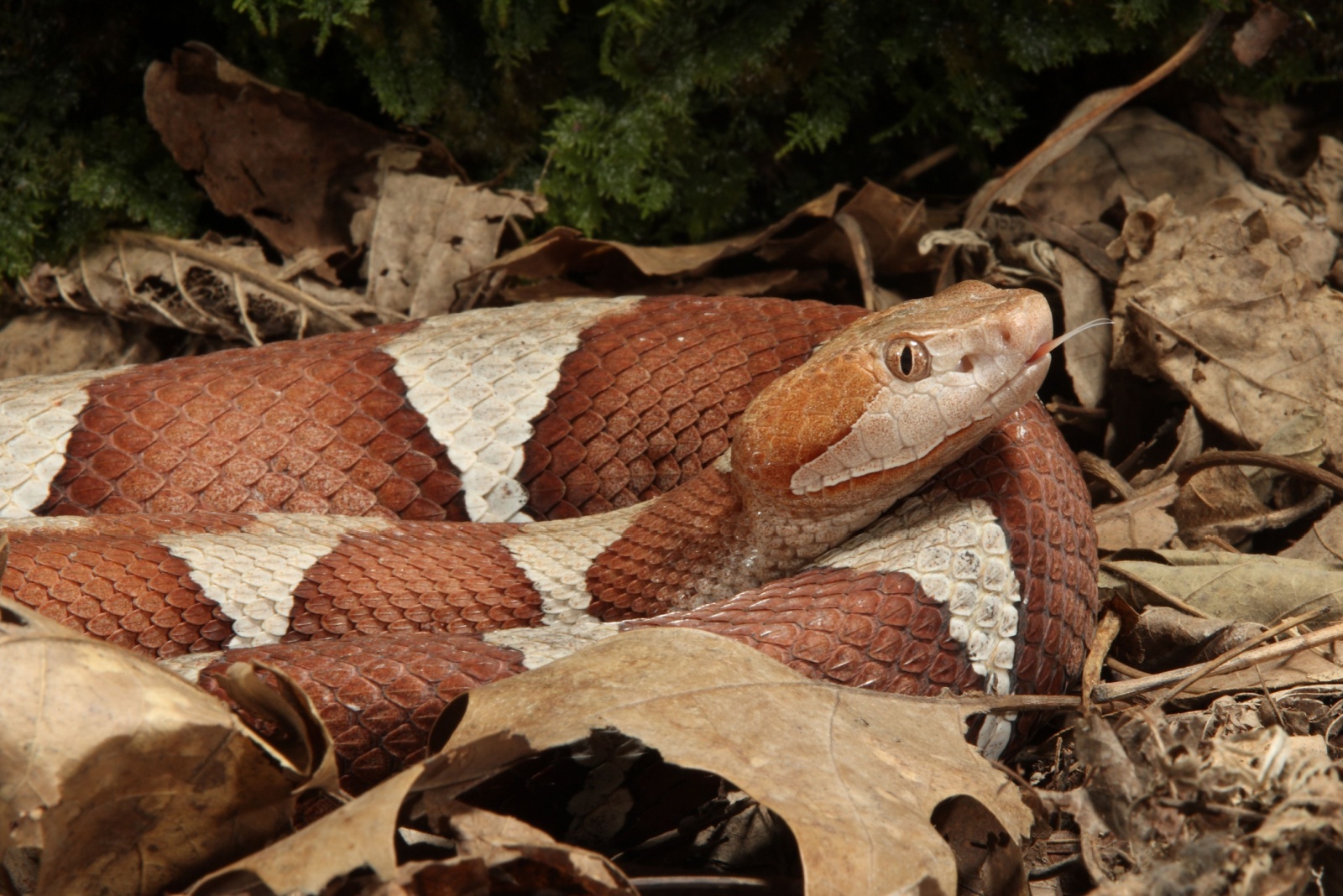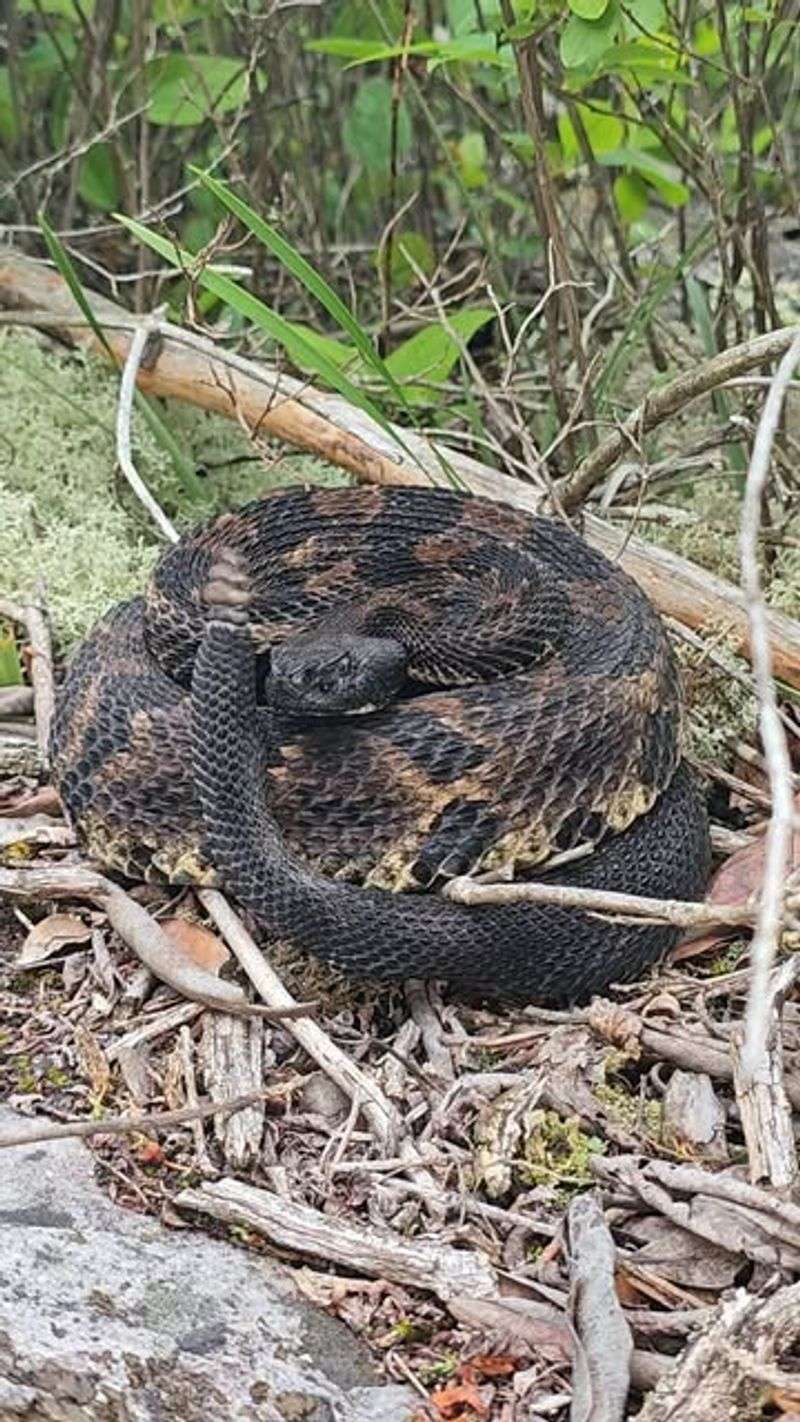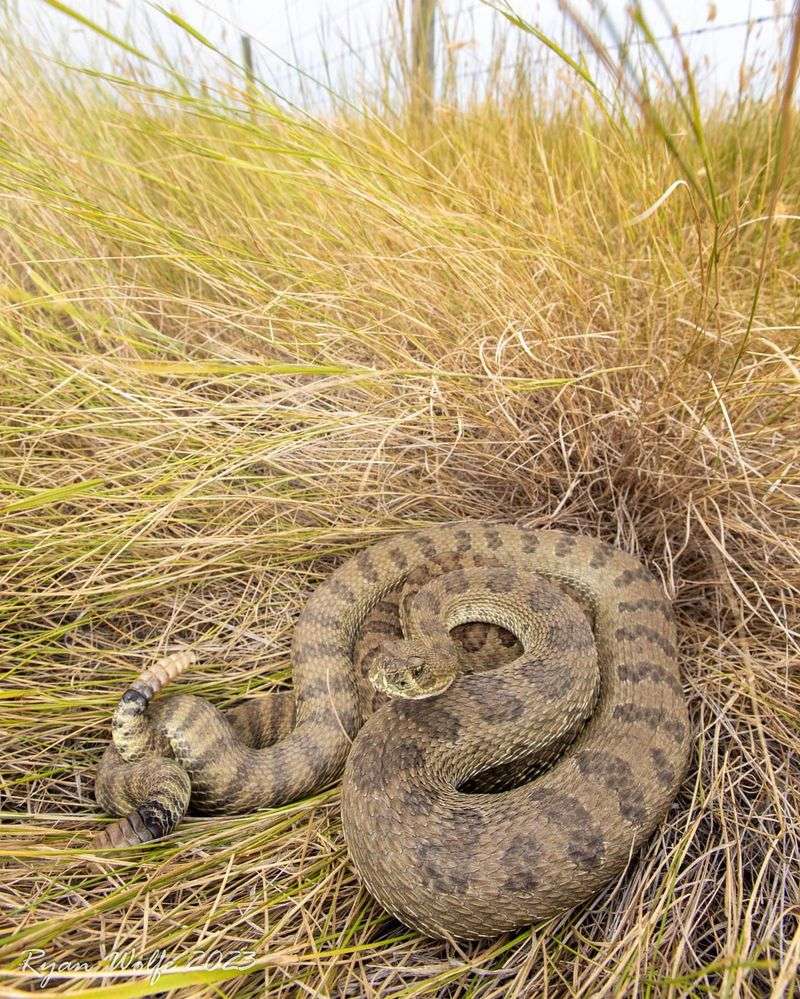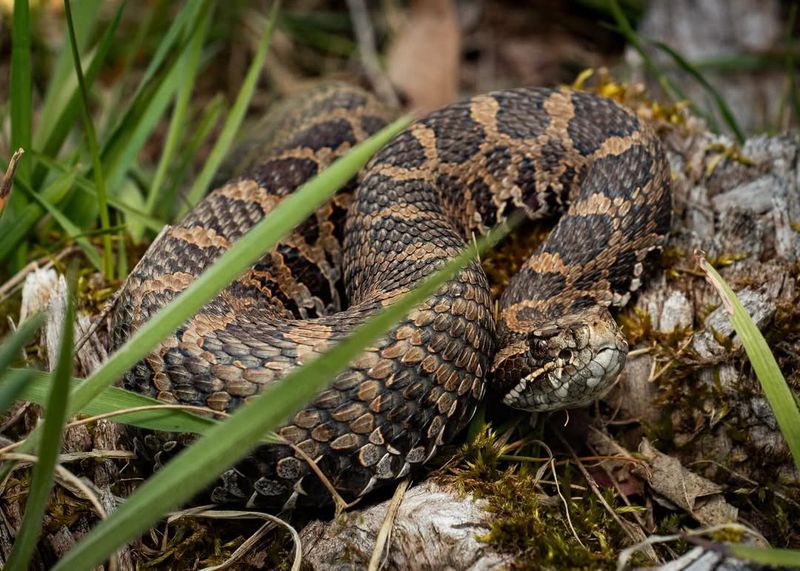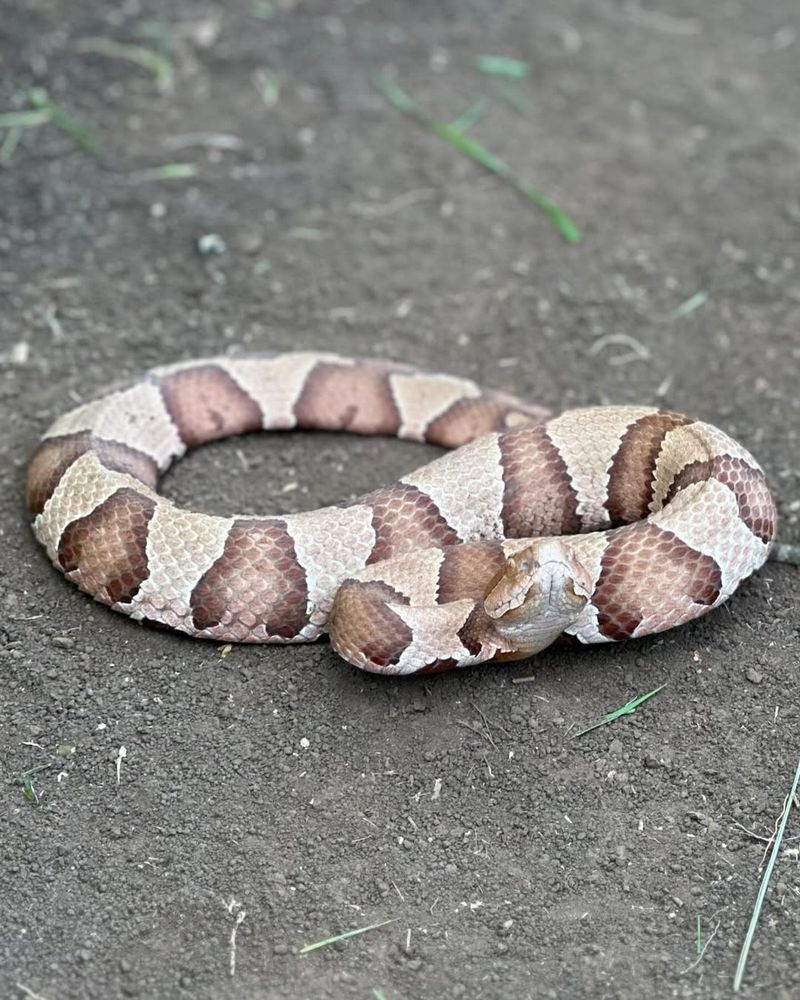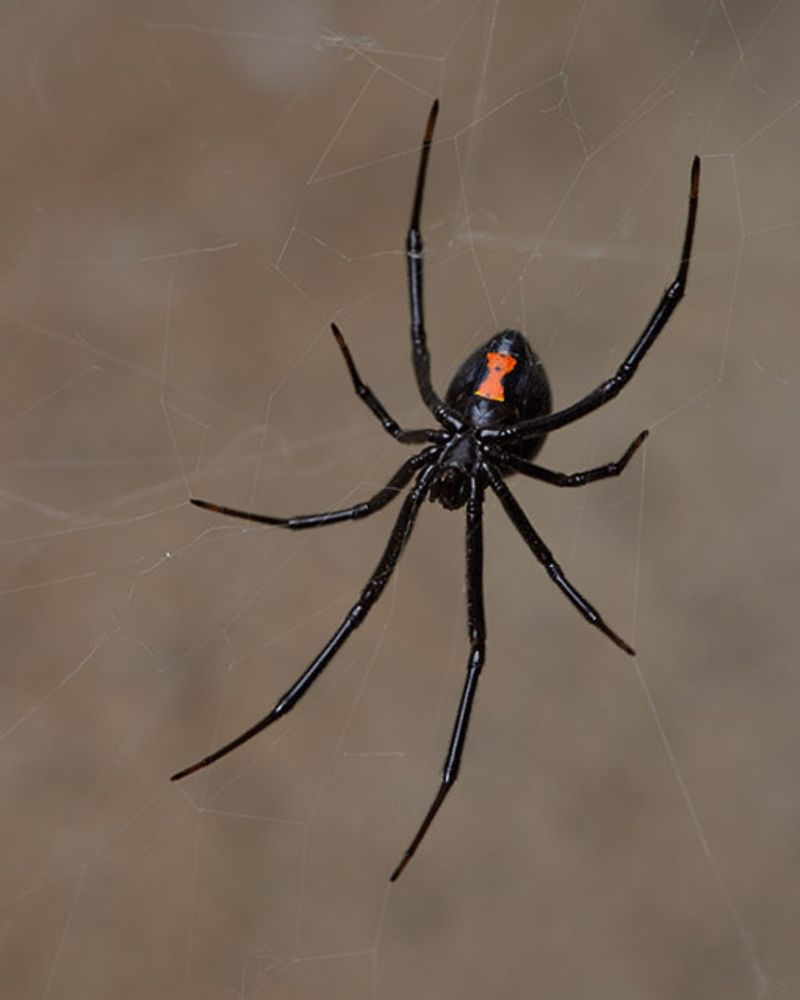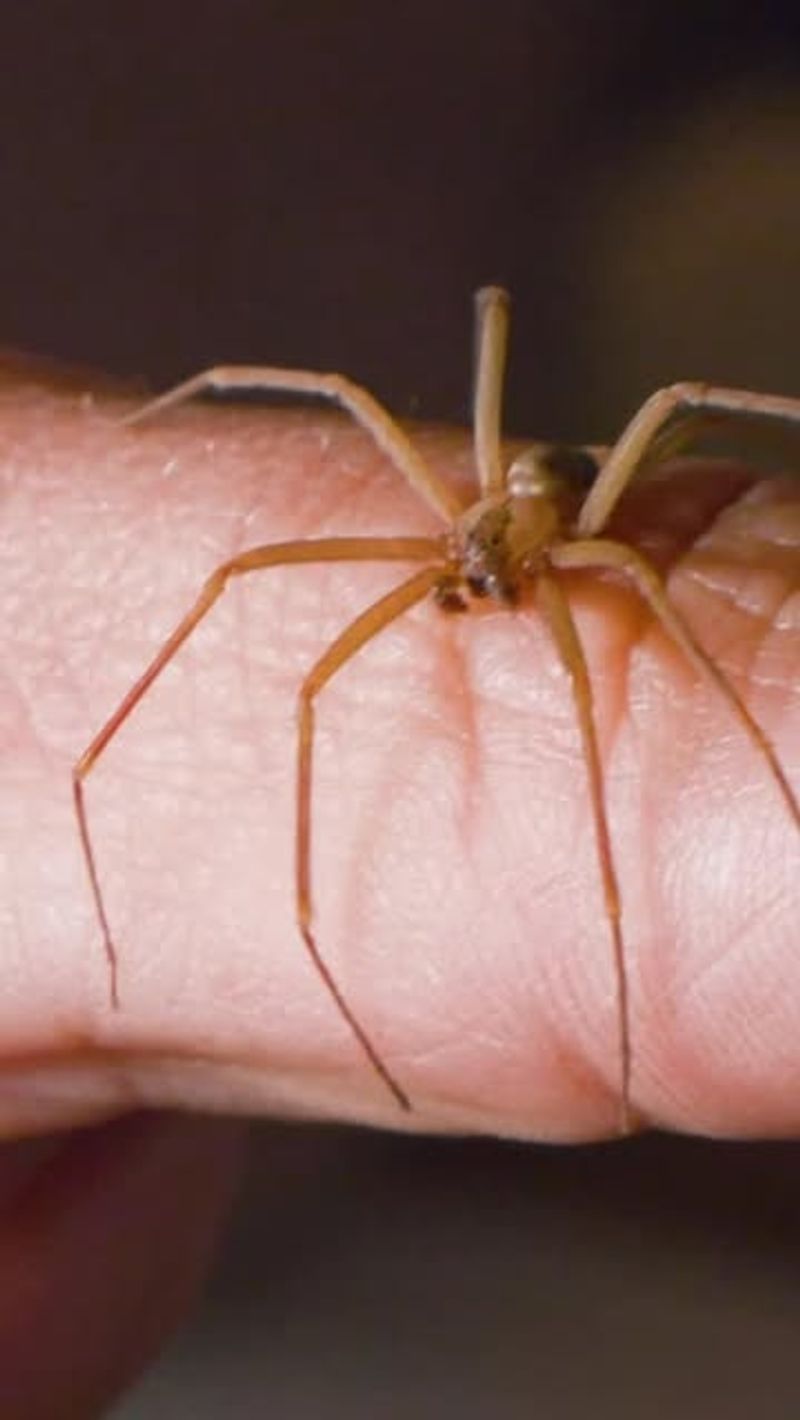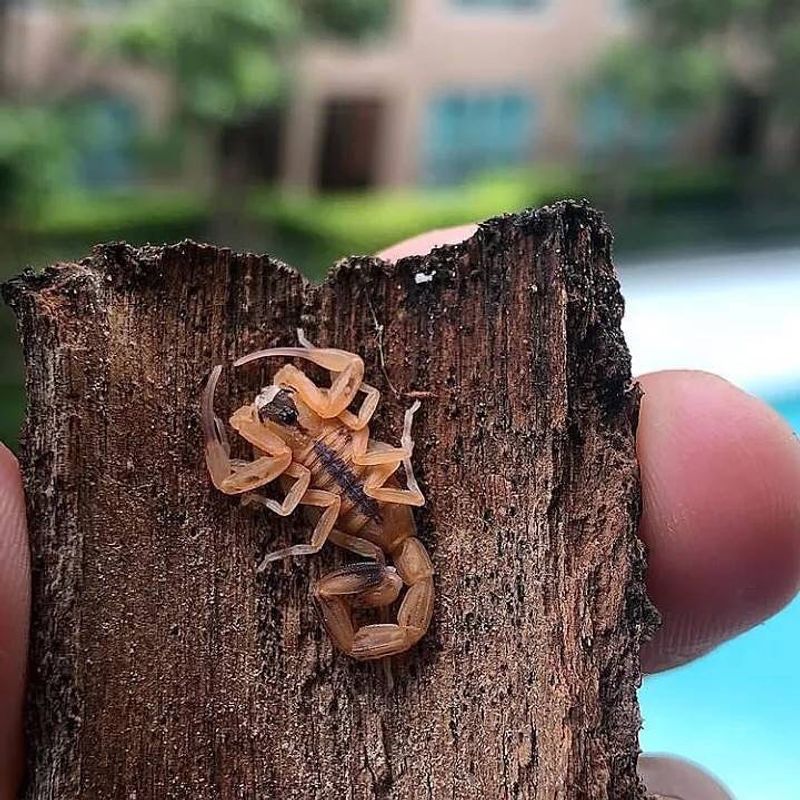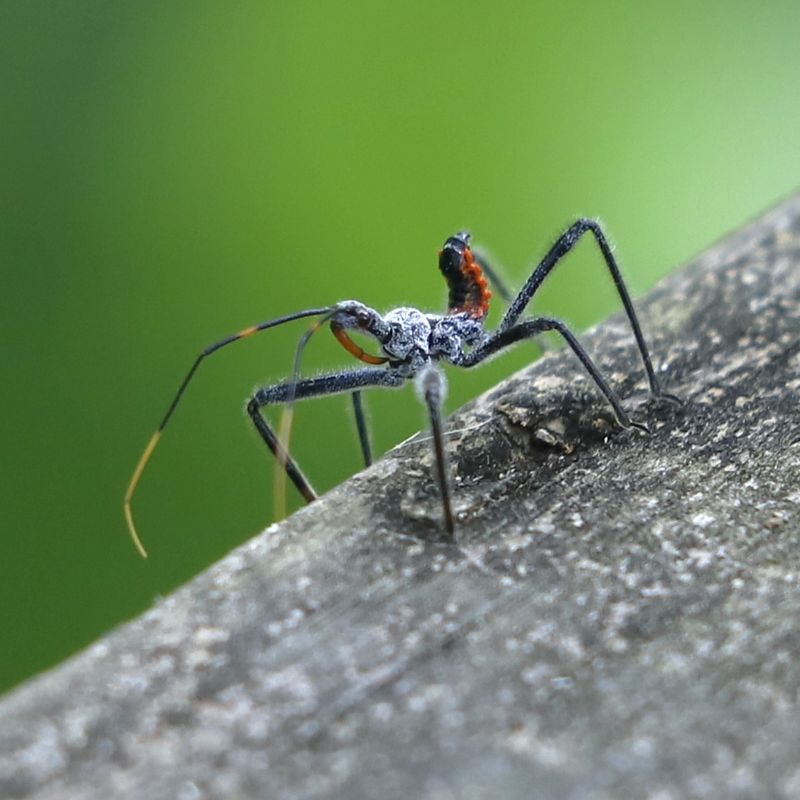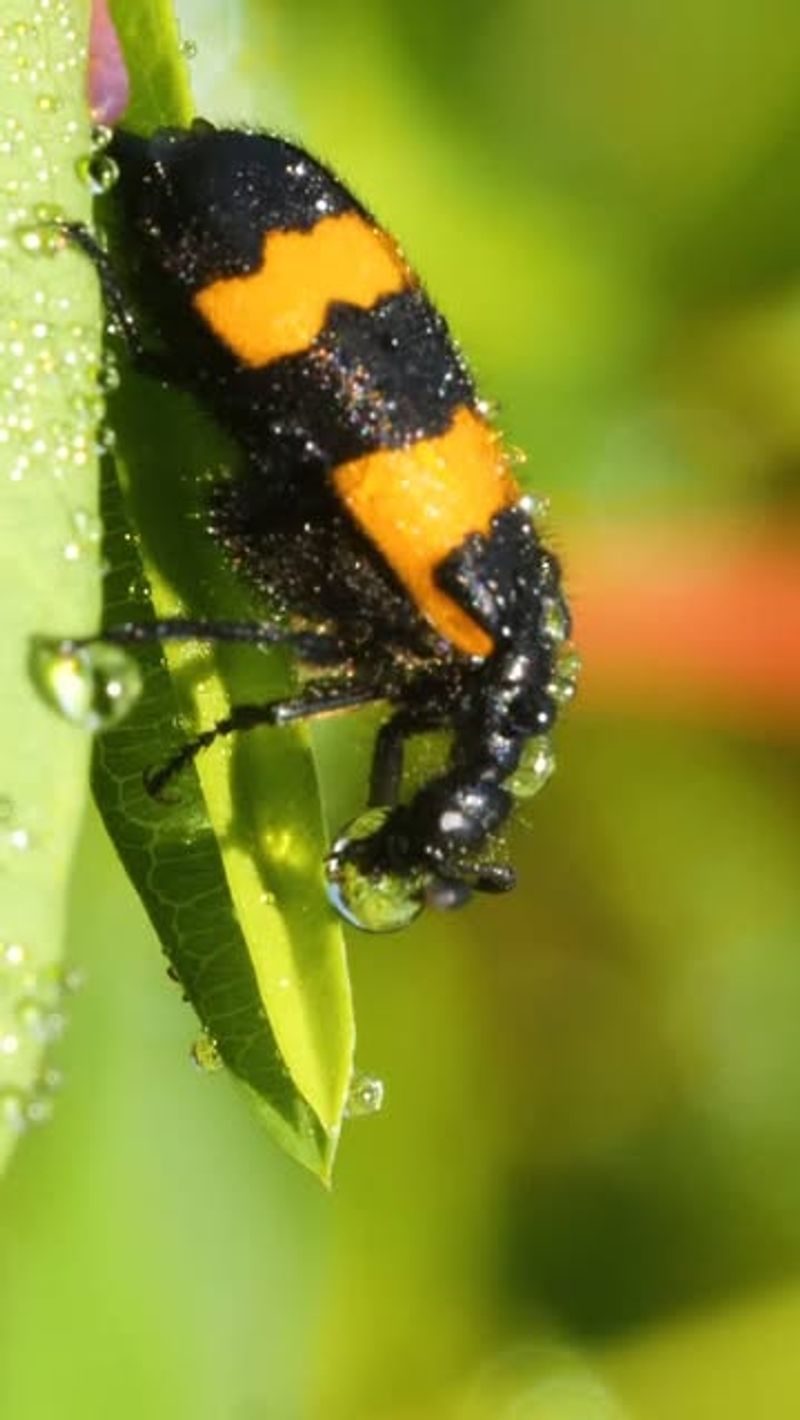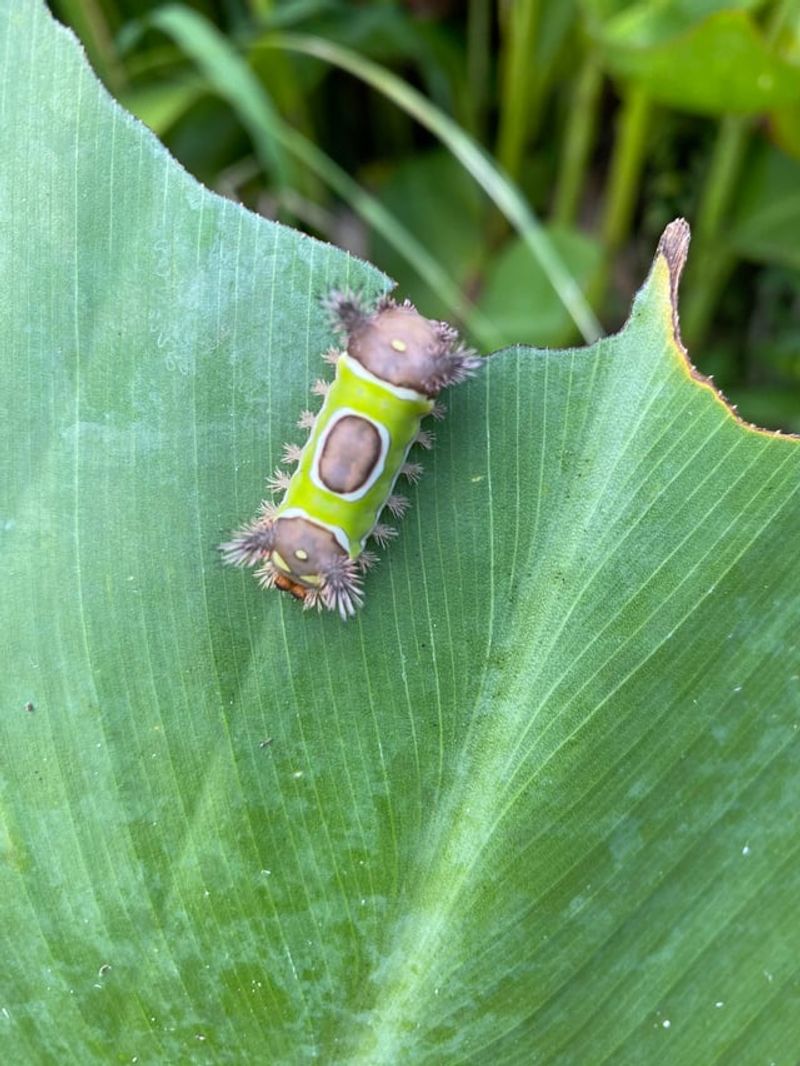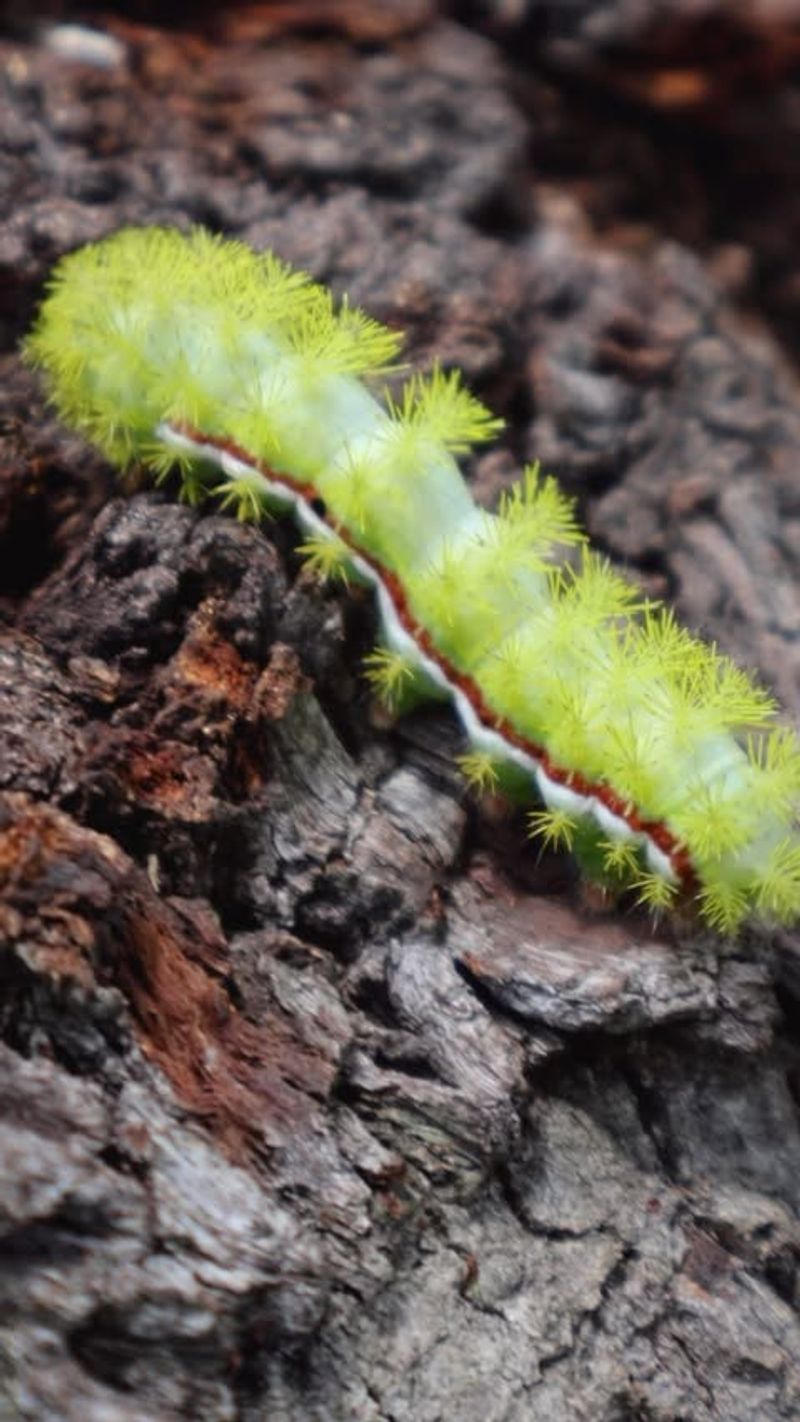Living in Nebraska means enjoying wide-open spaces and beautiful natural surroundings, but it also means sharing your yard with some creatures that pack a venomous punch.
While most wildlife keeps to itself, knowing which animals to watch out for can help keep your family and pets safe. Understanding these venomous neighbors is the first step to peaceful coexistence and staying out of harm’s way.
1. Timber Rattlesnake
Found mostly in the Pine Ridge and Niobrara River areas, this heavy-bodied snake prefers rocky hillsides and wooded bluffs. Adults can grow up to five feet long and sport dark chevron bands across their backs.
Their venom is potent but they’re generally shy, rattling loudly before striking as a warning. Keep your distance if you hear that distinctive buzz during hikes.
Wear boots and watch where you step when exploring rocky terrain during warm months.
2. Prairie Rattlesnake
Nebraska’s most widespread venomous snake calls grasslands and prairies home throughout the state. Sporting greenish-brown coloring with darker blotches, they blend perfectly into their surroundings.
During summer, they hunt rodents around farms and ranch buildings, sometimes ending up in yards or outbuildings. Their bite delivers hemotoxic venom that damages tissue and blood cells.
Always check before reaching into wood piles or tall grass where these reptiles might be hiding and cooling off.
3. Massasauga Rattlesnake
This smaller rattler, reaching only two feet long, inhabits wetlands and marshy areas in southeastern Nebraska. Gray with dark blotches, they’re often mistaken for harmless water snakes.
Their venom is less potent than larger rattlesnakes, but bites still require immediate medical attention. They’re most active during spring and fall when temperatures stay moderate.
Watch carefully when working near ponds, drainage ditches, or low-lying wet areas where these secretive snakes hunt frogs and small mammals.
4. Copperhead Snake
Extremely rare in Nebraska, copperheads appear only in the far southeastern corner near the Missouri border. Their copper-colored heads and hourglass-shaped bands make them relatively easy to identify.
Unlike rattlesnakes, copperheads lack warning rattles and may strike without notice when surprised. Their venom causes painful swelling but is rarely life-threatening to healthy adults.
If you live in extreme southeastern Nebraska, learn to recognize this snake and keep yards free of debris piles where they hide.
5. Black Widow Spider
Recognizable by their shiny black bodies and red hourglass markings, female black widows pack neurotoxic venom that affects the nervous system. Males are harmless and much smaller than females.
They build messy, irregular webs in dark corners of garages, sheds, woodpiles, and underneath outdoor furniture. Bites cause severe muscle pain and cramping requiring medical treatment.
Wear gloves when cleaning storage areas and shake out shoes left outside overnight to avoid unwanted surprises.
6. Brown Recluse Spider
Sporting a violin-shaped mark on their backs, these tan spiders prefer undisturbed indoor spaces like closets, basements, and attics. Unlike most spiders with eight eyes, brown recluses have only six arranged in pairs.
Their venom destroys skin tissue, sometimes causing serious wounds that take months to heal. They’re not aggressive but will bite when trapped against skin.
Reduce clutter in storage areas and seal cracks where these nocturnal hunters might enter your home.
7. Striped Bark Scorpion
Nebraska’s only scorpion species grows about two inches long with yellowish coloring and dark stripes running lengthwise down its back. Found primarily in southern counties, they hide under rocks, logs, and loose bark during daylight hours.
Their sting feels similar to a wasp sting, causing localized pain and swelling but rarely serious complications. They glow bright green under ultraviolet light, making nighttime detection easier.
Check shoes and clothing before dressing if you live in areas where scorpions are present.
8. Wheel Bug
North America’s largest assassin bug sports a bizarre cogwheel-shaped crest on its back, making identification easy. Growing over an inch long, these beneficial insects hunt caterpillars and other garden pests with their piercing mouthparts.
While helpful for pest control, their defensive bite delivers enzymes that cause intense burning pain lasting for hours. Swelling and numbness often accompany the bite.
Appreciate them from a distance and never handle them, even though they help protect your garden naturally.
9. Blister Beetles
Several species inhabit Nebraska gardens and alfalfa fields, with colors ranging from solid black to striped patterns. When threatened or crushed against skin, they release cantharidin, a blistering agent that causes painful welts and burns.
Large swarms sometimes appear suddenly in gardens during summer months. Livestock can be poisoned if they eat hay containing these beetles.
Remove them from plants by knocking them into soapy water rather than crushing them with bare hands.
10. Saddleback Caterpillar
This bizarre-looking caterpillar wears a bright green saddle-shaped patch on its brown body, surrounded by fleshy horns covered in venomous spines. Found on various trees and shrubs, they’re most common in eastern Nebraska during late summer.
Contact with their spines causes immediate burning pain, swelling, and sometimes nausea. The irritation can last for days.
Teach children to admire caterpillars without touching them, as many colorful species use venom for defense against predators.
11. Io Moth Caterpillar
Bright lime-green with red and white stripes, these stunning caterpillars feed on many tree species including willow, oak, and maple. Clusters of branching spines cover their entire body, each capable of delivering venom.
Brushing against them causes immediate stinging pain similar to nettles, followed by red welts and itching. Young children are particularly sensitive to their venom.
Inspect trees before trimming branches and teach kids that beautiful doesn’t mean safe when it comes to fuzzy caterpillars.

